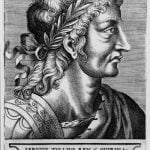Tribal Assembly (comitia tributa) was made up of citizens divided by the district of residence (tribus).
Meetings were held at the Capitol, Forum Romanum or Campus Martius. Senior officials convened them only: the consul, praetor, curule aedile, and people’s tribune. A people’s assembly was called concilium plebis to discuss the interests of the plebeians. Only a people’s tribune could convene them, with the decision to convene it, collectively made by all the people of the folk stands, unless any of them obtained the power of attorney to do so on behalf of his colleagues in the office.
The tribunal assembly had the following powers:
- worked on bills submitted by people’s tribunes
- elected people’s tribunes
- elected military tribunes, aedile, quaestor, junior officials
- handed down court sentences over 3000 aces, based on officials’ decisions
In addition, the resolution of Lex Hortensia of 287 BCE gave the resolutions of the tribunal assembly universally binding force, which did not require the approval of the Senate.
Voting at the meeting was according to tribus, the majority of which was 18. The resolutions adopted at this meeting were called plebiscitia.
The tribunal assembly could also elect a consul, at that time it debated under the name comitia consularia.






